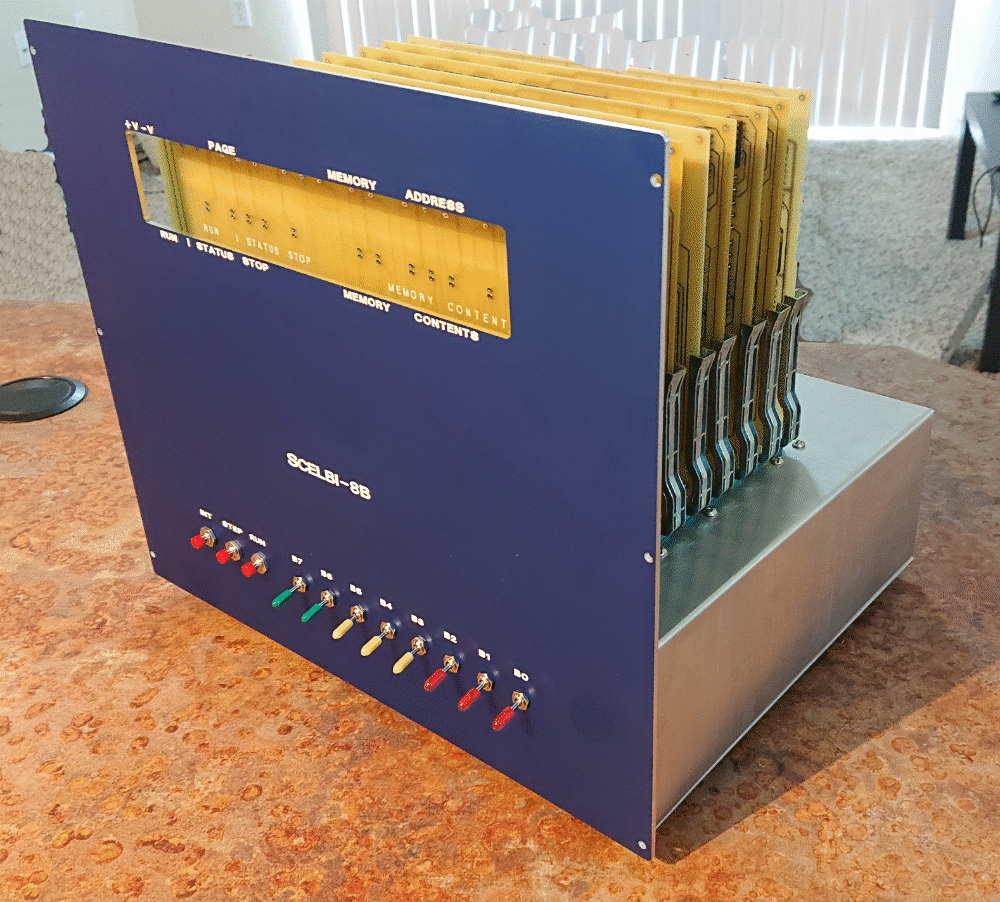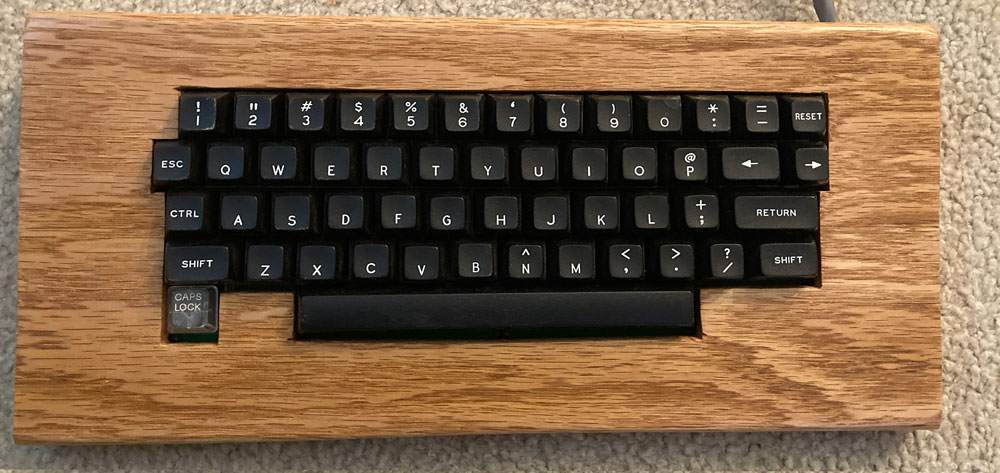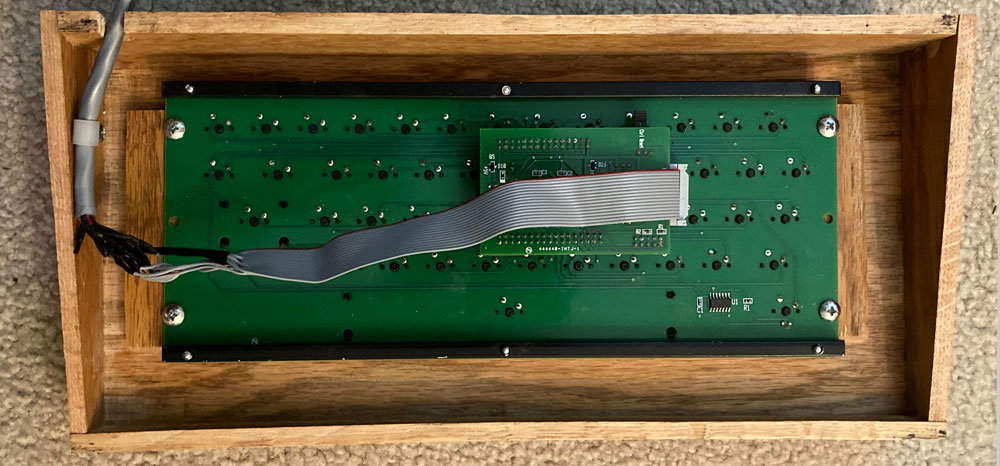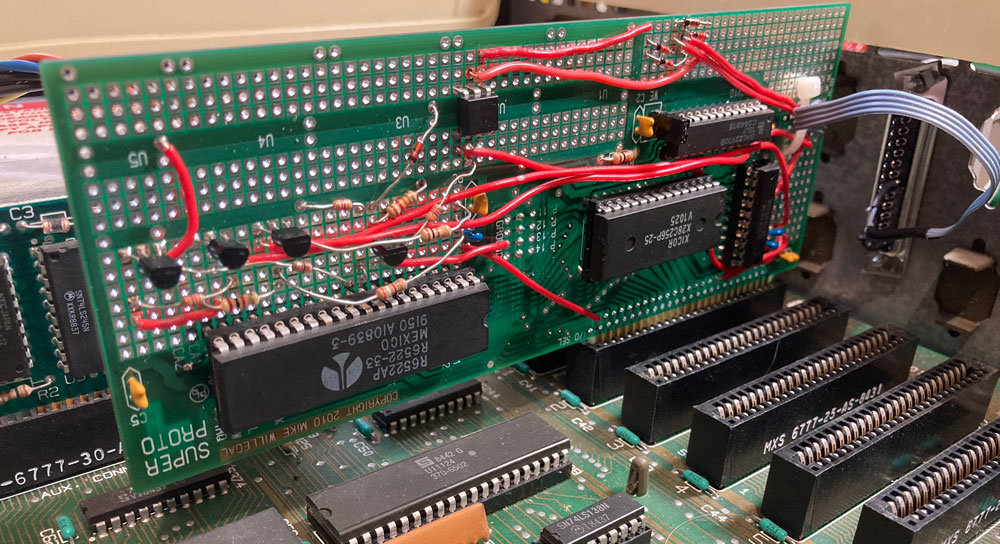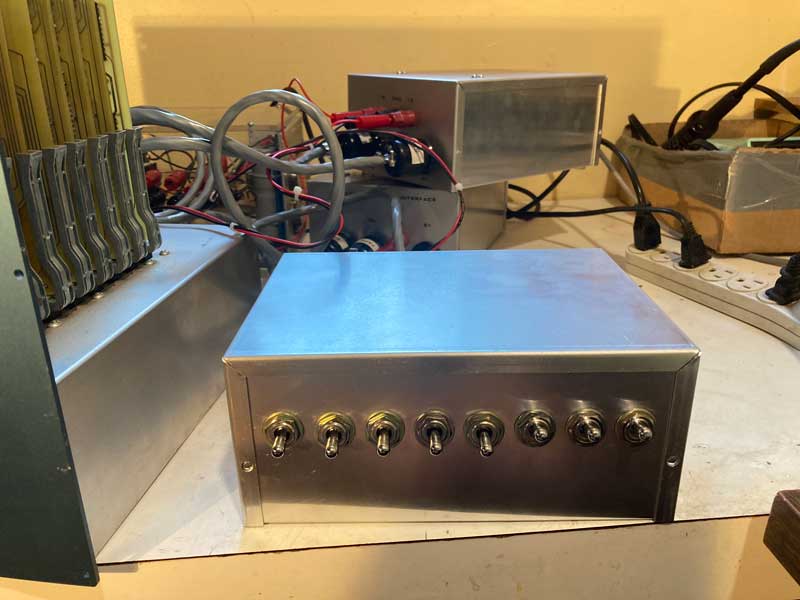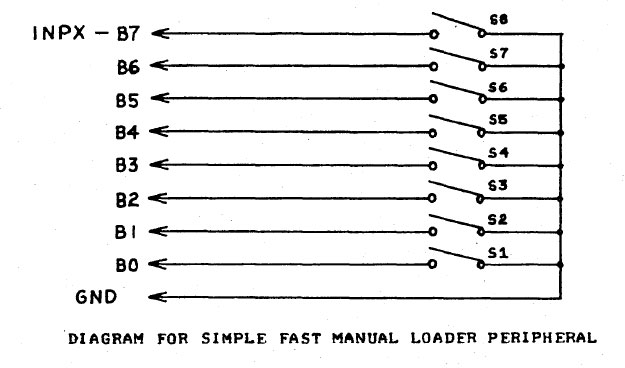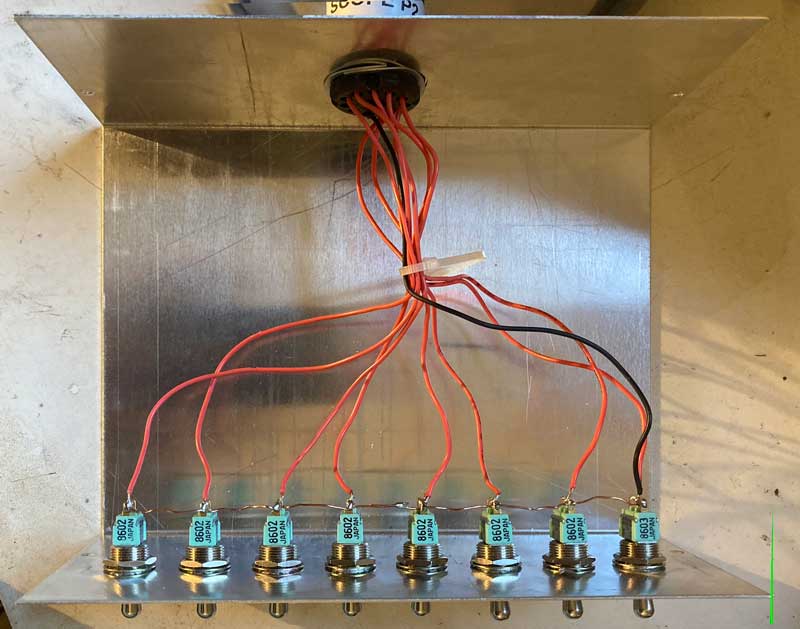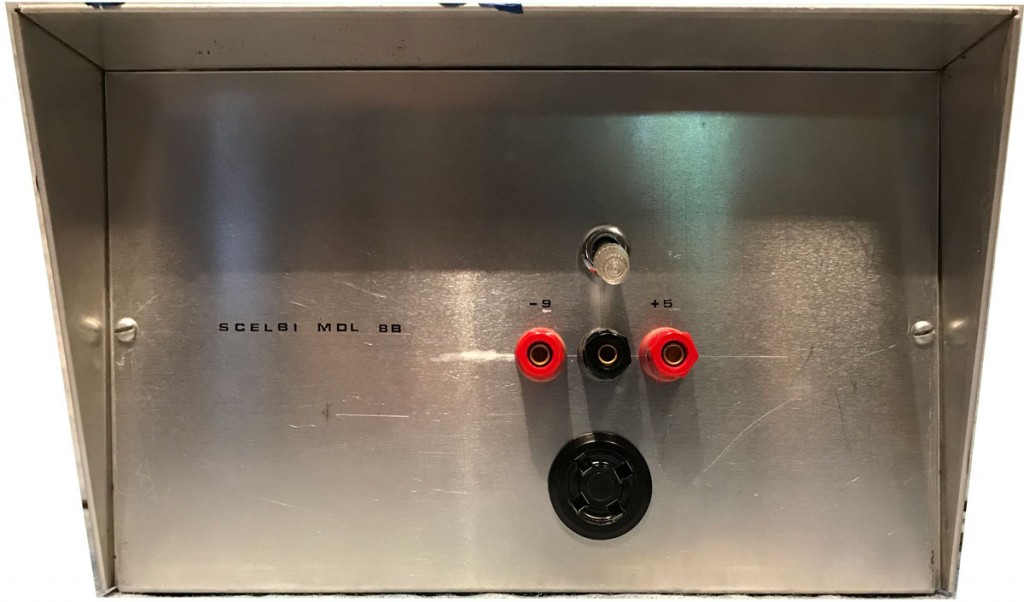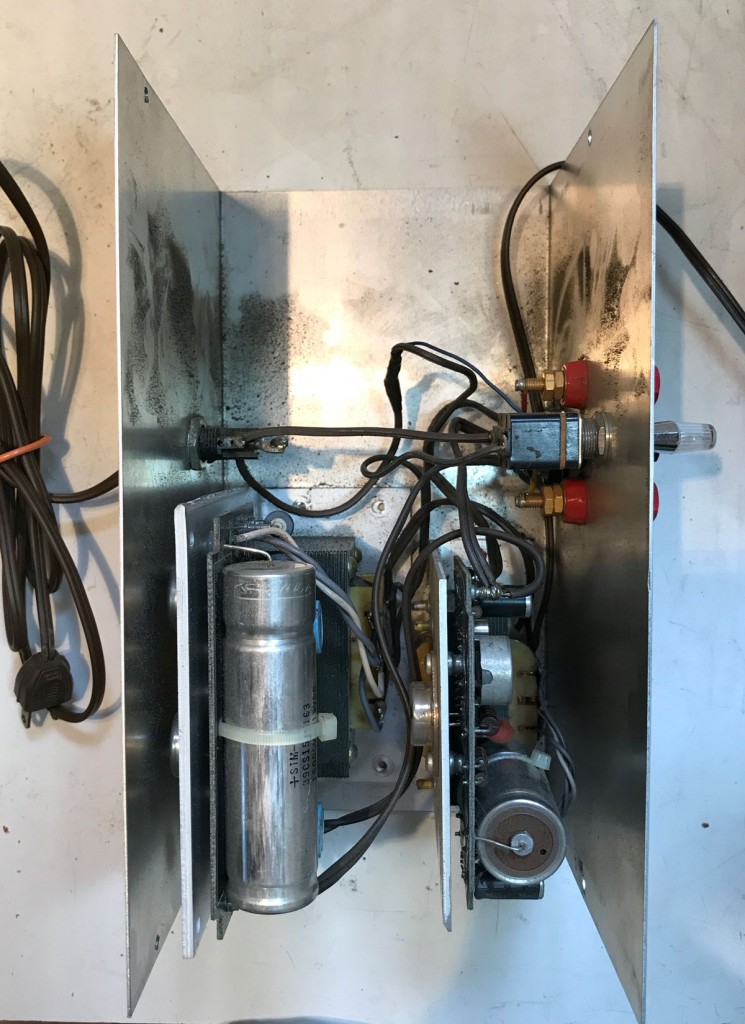The Intel 8008 processor has two speed grades, 500 kHz and 800 kHz. The 800 kHz version is labeled as the 8008-1. Peter Miller is building a SCELBI 8B and decided to try to run his newly built system at 800 kHz. Using the existing hardware design he simply scaled the clock configuration. In his words…
Φ1 has a duty cycle of 42.5% and Φ2 has a duty cycle of 27.5%. The only thing I had to figure out an exact quantity for was the delay between Φ1 and Φ2, (rising edge of each, since that’s what my scope liked) which I just did (850ns + 200ns) * (500KHz/800KHz) = 656.25 ns.
What a nifty little hack! As far as I can remember or know, this could well be the first time that a SCELBI was set up to run at the higher 8008-1 clock speed. Of course, without doing additional detailed testing, there is always the chance that some component of the timing is marginal and some systems don’t work reliably at this higher speed.
Since I/O is timing is derived from the 8008 clock, most standard I/O devices will not interoperate with normal speed SCELBI I/O at this speed, but I’m sure the I/O could be fixed with some additional effort. Two devices that will probably require some extra effort are the O-scope and Cassette interfaces since they both utilize the hardware SYNC clock for timing. I/O like the serial interface that uses software for I/O timing, should be able to interoperate by simply retiming the software timing loops.

